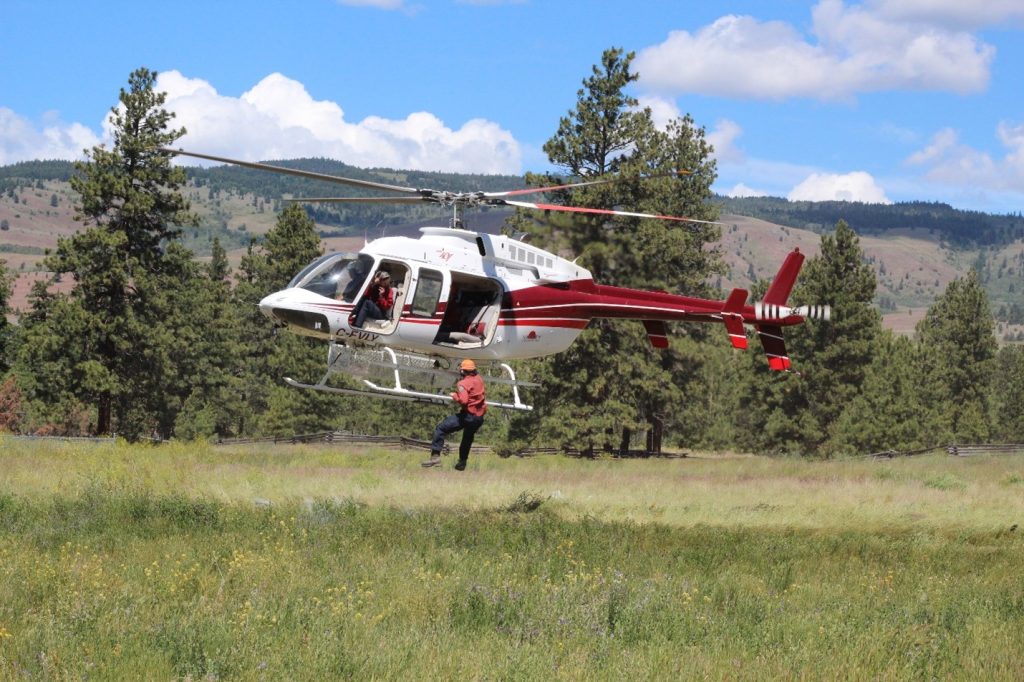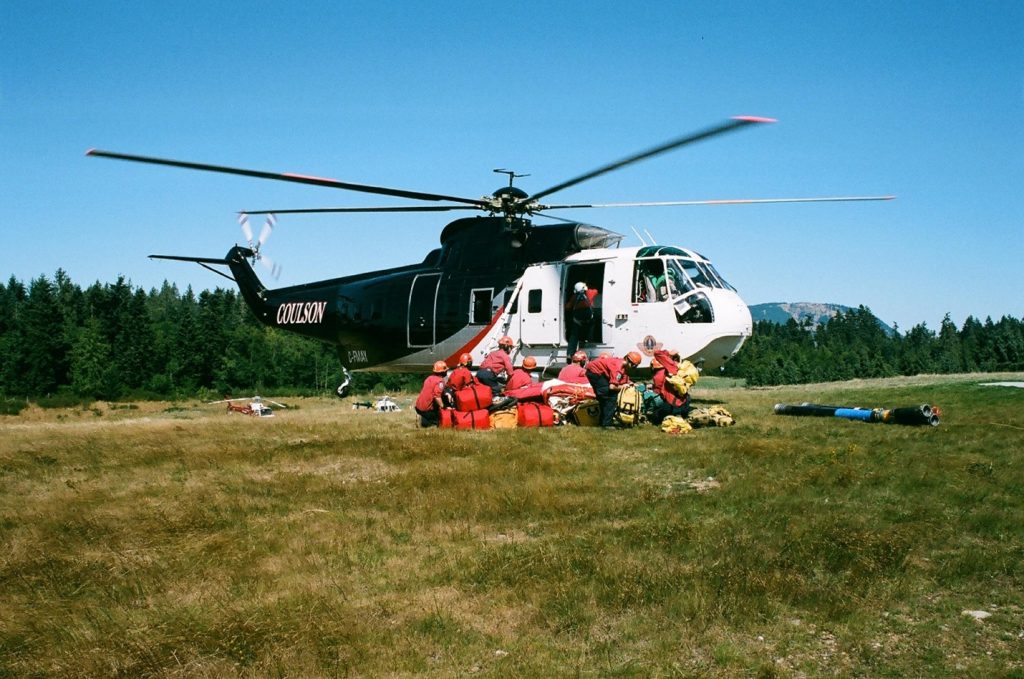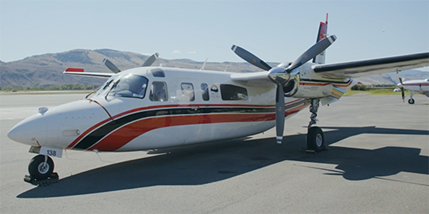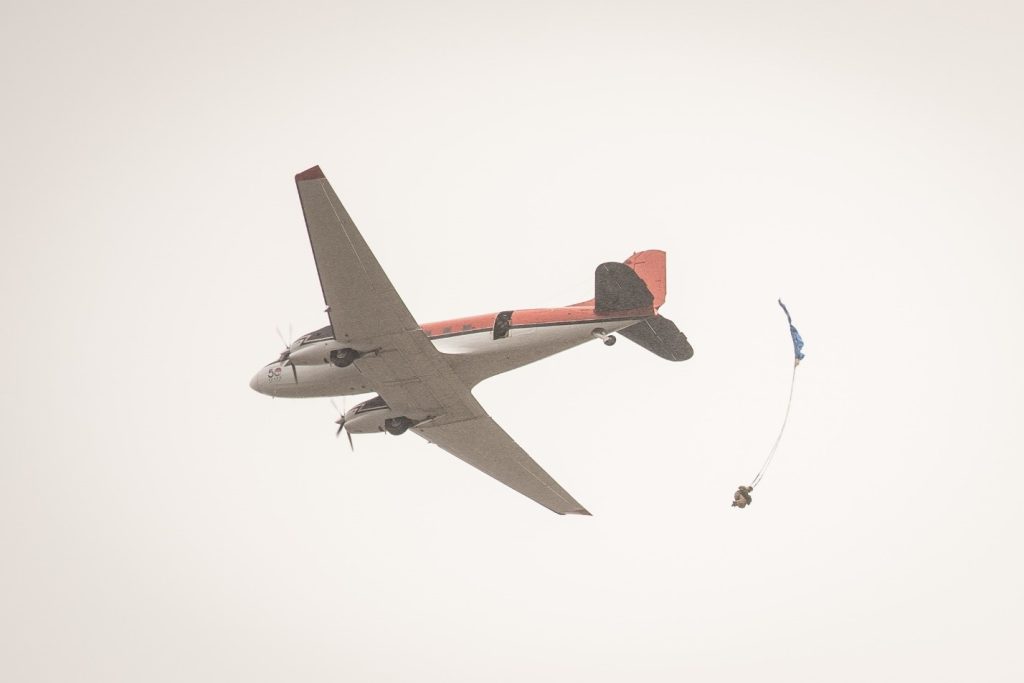Helicopters and airtankers are a vital part of wildfire response in British Columbia. Their key purpose is to support firefighters on the ground by dropping water and fire retardant, transporting crews and other personnel, delivering gear, fire patrols and infrared scanning.
The BC Wildfire Service has a fleet of nearly 40 aircraft, including airtankers, birddogs, helicopters, and jumpships (aircraft used to transport parattack firefighters and for fire patrol) with access to many more as needed. These aircraft are stationed around the province during fire season and repositioned as needed to be ready for anticipated fire starts in high-risk areas.
Helicopters
Helicopters are also known as rotary-wing aircraft. The BC Wildfire Service employs four different sizes of helicopters.
Light:

These helicopters have limited lift capabilities, especially in hot weather or at high altitudes, where the air gets thinner. These machines are typically used for hot spot detection through infrared scanning and aerial reconnaissance missions.
A Bell 206 JetRanger is an example of a light-type helicopter.
Intermediate:

With a bit more lift capability, these machines are typically used to support initial attack crews, as they are capable of flying a three-to-four person crew and their equipment to the fire, as well as assist suppression efforts with bucketing water. Additionally, these helicopters are used for aerial ignition operations or any other function that a light-type helicopter could perform.
Common intermediate-type helicopters used by the BC Wildfire Service include the Eurocopter AS 350 A Star or Bell 206 LongRanger.
Medium:

This type of machine is more commonly used on large fires where bucketing operations are relied upon. The seating capacity of these machines also allows for a greater movement of crews and gear, and the greater lift capacity allows for even bigger water buckets and more water delivery on a fire. These helicopters are also used by our provincial rappel firefighting crews.
Common medium-type helicopters used by the BC Wildfire Service include the Bell 205, 212 and 412.
Heavy:

This helicopter type is generally only used on large fires and is primarily used for water delivery. The superior lift capacity of this aircraft type allows some machines to drop over a thousand gallons of water with each bucket. Transporting crews via a heavy-type helicopter is rare, as most machines have wheels and can only land on flat, hard-packed terrain.
Some examples of heavy helicopters used by the BC Wildfire Service include the Bell 214, Eurocopter 332 Super Puma and the Sikorsky 61.
Airtankers and other fixed-wing aircraft
The BC Wildfire Service employs several types of fixed-wing aircraft that serve specific purposes.
Airtankers usually fly in groups of up to six aircraft with a combined capacity of up to 23,850 litres of fire retardant, or over 11,000 litres for a single, heavy aircraft. Each group is led by a “birddog” plane that directs the airtankers to safe and effective drop locations.
Land-based airtankers:

These airtankers are equipped with tanks and are specially designed to drop fire retardant. Directed by an Air Attack Officer, they are capable of hitting multiple objectives in one flight.
Example aircraft include the Convair CV-580, Avro RJ-85, Lockheed L-188 Electra and Bombardier Q400. The Province’s long-term contracted fleet also includes several “heavy” type airtankers including four Electra L-188s and 2 RJ-85 580s.
Water-skimmers:

Also known as amphibious airtankers, these aircraft are able to “skim” water from lakes. The BC Wildfire Service’s fleet includes Air Tractor AT-802F Fire Boss amphibious airtankers. They can drop either water, foam enhanced water or fire retardant, and each is capable of skimming up to 2,700 litres of water in 15 seconds from over 1,700 bodies of water in B.C.
Birddogs:

The birddog plane leads other aircraft with an Air Attack Officer on board, partnered with the pilot. These aircraft will fly 100-1,000 feet above the target area to coordinate airtankers and other aircraft to support ground crews. The Air Attack Officer will verbally direct airtankers where to drop water or retardant.
Example aircraft used by the BC Wildfire Service are the Turbo Commander TC-690A, Turbo Commander 1000, and the Cessna Caravan C208.
Air Patrols:

Air patrols are often performed using single-engine aircraft that have high wings to allow the pilot and spotter to detect and report wildfires. This aircraft is often deployed after a lightning storm has passed through an area where wildfires may have started. Fire Zone staff will plot flight paths for the pilot to fly that take into account areas where significant lightning was experienced, or where a hazard is most concerning. This service allows the BC Wildfire Service to efficiently cover a large geographical area and is a valuable detection source for less populated regions of the province.
Parattack Jumpships:

The BC Wildfire Service contracts out two specialized aircraft that serve as Jumpships during the fire season. These planes are capable of responding to almost every area of the province in under two hours. The Jumpships are typically used to deploy parattack crews via parachute to action fires in the most remote regions of the province, but may also be used for fire detection, assisting with medical evacuations or resupplying crews with gear.
On average, aircraft support over 560 missions throughout the fire season. A mission is set around one target but may involve several aircraft.
To learn more about wildfire aviation, visit bcwildfire.ca.
